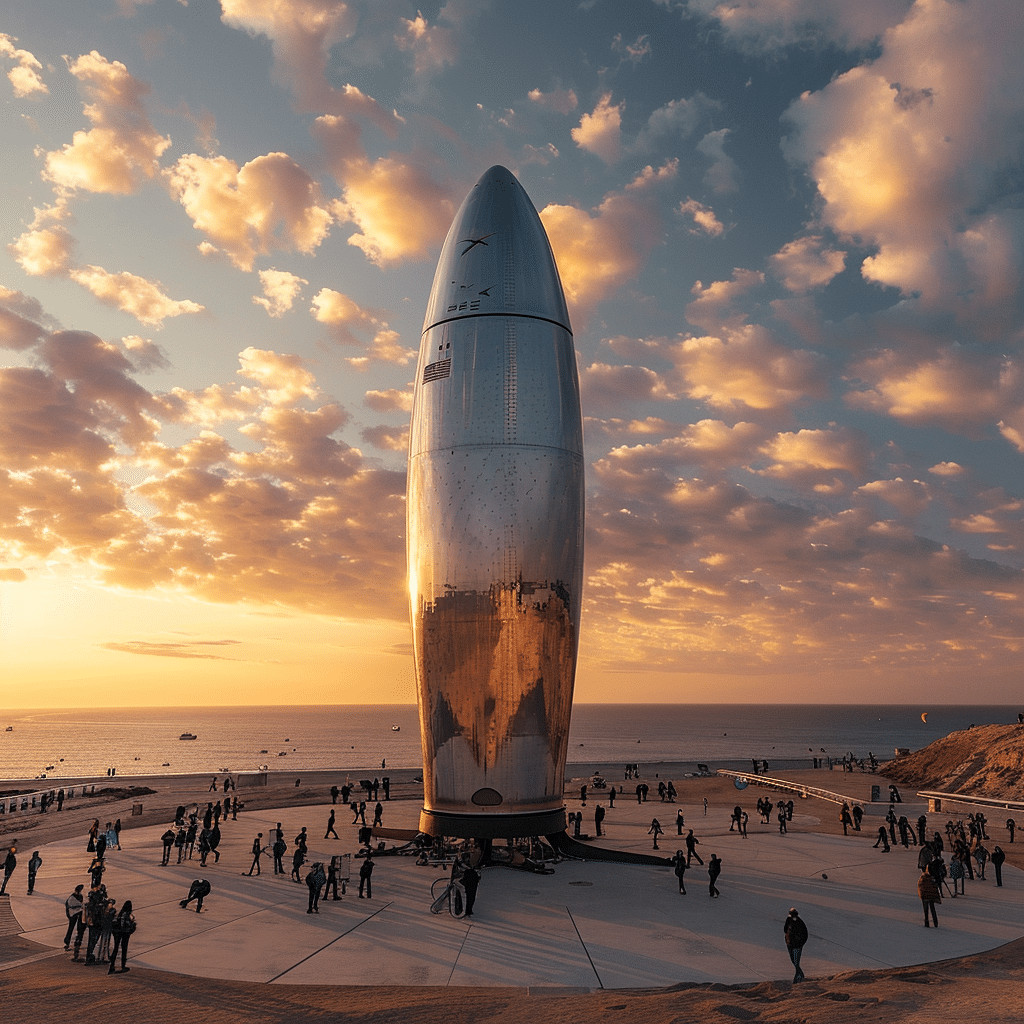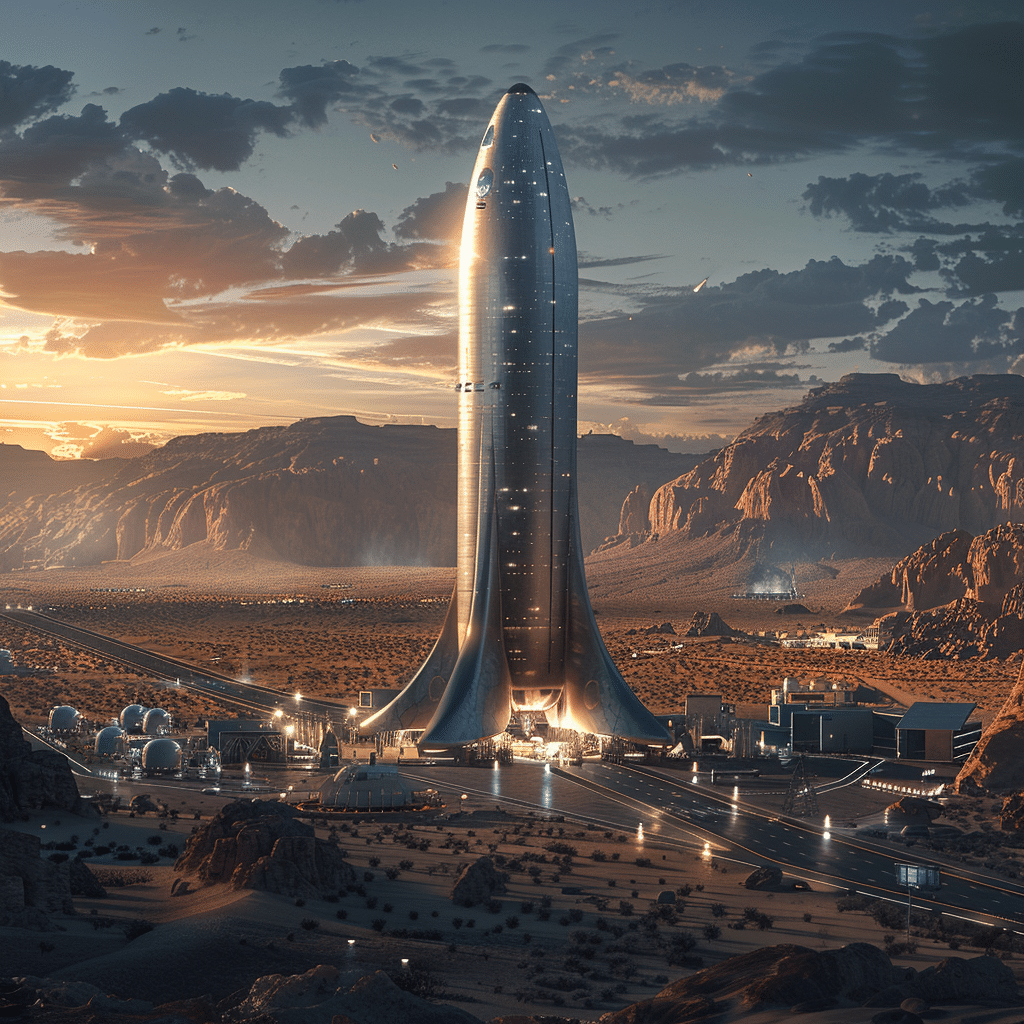SpaceX, the private aerospace manufacturer and space transportation juggernaut, has reached a thrilling milestone with the first full flight success of their Starship vehicle. This landmark event epitomizes far-reaching technological prowess and a considerable shift in global space travel. We dive deep into the nuts and bolts of this monumental achievement, offering insights, detailed analysis, and a glimpse into the future of human space exploration.
Historical Context: Evolution of the Starship Project
The journey of Starship, SpaceX’s ambitious project, is rooted in its visionary goal of Mars colonization. Initially christened the Big Falcon Rocket (BFR) by CEO Elon Musk in 2016, the vehicle has evolved through countless iterations. Milestones like the “hop” trials of Starhopper in 2019 and the SN8’s high-altitude test in 2020—despite its explosive conclusion—highlight the highs and lows that paved the way to the recent full flight success. SpaceX’s dogged pursuit of perfection embodies its broader mission to revolutionize space travel.

Key Highlights of the Starship’s Full Flight Success
The recently successful flight stands out for various reasons:
| **Topic** | **Details** |
|---|---|
| Project Name | SpaceX Starship |
| Developer | SpaceX |
| Type | Reusable spacecraft consisting of the Starship upper stage and Super Heavy booster |
| Development Approach | Iterative and incremental development involving test flights of prototype vehicles |
| Current Status (2024) | Starship is in active development with test flights ongoing. Four additional test flights are planned for 2024. |
| Significant Milestone | Completed first-ever full flight and successful re-entry on June 7, 2024 |
| Facility | Private Starbase facility in Boca Chica, Texas |
| Launch Goals for 2024 | Aiming for a total of six test flights in the year |
| Primary Objectives | – To perform a wide range of space missions (e.g., satellite deployment, crewed missions) |
| – Serve as a successor to Falcon 9 and Falcon Heavy rockets. | |
| Technical Specifications | – Upper Stage: Starship spacecraft |
| – Booster: Super Heavy | |
| Long-term Vision | Facilitate human missions to Mars and potentially other interplanetary destinations |
| CEO and Founder | Elon Musk |
| Notable Upcoming Events | Four more Starship launches anticipated in the next six months as part of the six-test flight goal for 2024 |
| Future Prospects | Expected to revolutionize space travel through reusability and versatility, potentially lowering launch costs significantly |
Engineering Marvel: Technical Insights and Breakthroughs
SpaceX’s engineers have navigated myriad challenges to attain this triumph. Here are some groundbreaking technical advancements:

Expert Opinions: What Space Industry Leaders Are Saying
The aerospace community has lauded SpaceX’s achievement, recognizing its impact on space travel. NASA Administrator Bill Nelson remarked, “SpaceX has demonstrated an unparalleled capacity for innovation and resilience. The success of their Starship flight marks a new era for space travel.” Meanwhile, Jeff Bezos, Blue Origin’s founder, commented, “Elon and the SpaceX team continue to push the boundaries of what is possible. This achievement sets a high bar for the industry.”
What’s Next for SpaceX and Starship?
With their most recent success behind them, SpaceX is setting its sights on even greater goals. The roadmap includes an array of test missions, further Starship refinements, and the much-anticipated crewed missions to the Moon and Mars. Not stopping there, SpaceX envisions the Starship aiding in commercial space tourism, satellite deployments, and even revolutionizing point-to-point travel on Earth.
Broader Implications: Global Space Race and Accessibility
SpaceX’s breakthrough extends beyond technological innovation, hinting at a paradigm shift in space exploration. By lowering costs and democratizing space access, SpaceX is changing how we approach space travel. This success puts pressure on international counterparts like ESA, Roscosmos, and CNSA to accelerate their ventures, fostering a more competitive and collaborative space exploration environment.
Final Thoughts: A Giant Leap Toward Our Future
The first full flight success of SpaceX’s Starship isn’t just a technological marvel but a flagbearer of human ingenuity and our unyielding quest to explore beyond our terrestrial confines. As the dust settles, the horizon of space travel glows bright with boundless possibilities. This achievement is, no doubt, a precursor to humanity’s next giant leap, leading us to the stars and beyond. Let’s celebrate this as a universal triumph, marking a new chapter in our shared journey into space.
Embracing Innovation and the Future
As we reflect on these momentous achievements, we can draw parallels to other spheres of innovation. Just as our approach to educational tools and technology continues to evolve, as seen in discussions on Should Phones be Allowed in school, so too does our drive for space exploration. With SpaceX setting new benchmarks, the future is laden with promise and practicality, bridging the gap between science fiction and reality.
For further exciting developments and to keep up-to-date with the latest spacex starship news, stay tuned to CWM News, where we bring you the cutting-edge of space exploration and beyond.
Best SpaceX Starship News First Full Flight Success
Fascinating SpaceX Starship Trivia
SpaceX has been all over the headlines due to its successful full flight of the Starship. But did you know that the Starship is part of Elon Musk’s grand vision to colonize Mars? This ambitious project dwarfs anything previously attempted in space exploration. Speaking of far-fetched goals, it’s worth noting that aims like these aren’t always smooth sailing. Just one look at the sloop webcam on a windy day can remind us of the kind of turbulence these crafts have to endure.
SpaceX’s achievements aren’t just limited to Mars. They’re revolutionizing space travel for everyone, much like how Rick Grimes altered perceptions of survival in a post-apocalyptic world. Did you know the Starship uses a unique type of stainless steel for its construction? This material choice is a design leap compared to the aluminum typically used in rockets. This design quirk is akin to an innovative play in sports, a game-changer like the electric atmosphere at Notre Dame stadium.
The introduction of the Starship also holds potential for making space travel more accessible. Could we see space flights become as common as Flights To San juan , Puerto rico? The possibilities are exhilarating. Furthermore, with dedicated journalists like Andrea Canning, who chase the toughest stories, the public remains well-informed about these monumental steps in space advancements.
Interestingly, while SpaceX innovates in aerospace, other fields continue to address pressing issues. The fight to save tigers from extinction, for instance, is another critical battle shaping our planet. Check out this insightful feature on why tigers are endangered to explore another realm of human endeavor. While Elon Musk dreams of making life multi-planetary, others are working hard to preserve our existing biodiversity. It’s all part of forward-thinking and visionary steps for a better future.

Will Starship survive reentry?
Starship recently survived re-entry, marking a breakthrough for the prototype system. This is a positive sign, suggesting it can withstand the severe conditions of re-entry.
What is SpaceX doing with Starship?
SpaceX is developing Starship to perform a wide range of missions, including sending people to Mars. They’re using an incremental approach involving multiple test flights of prototype vehicles.
Is Starship ever going to fly?
Starship has already flown, and it’s expected to fly several more times. SpaceX aims to launch six test flights in 2024, so there’s plenty of action ahead.
Where will Starship take off from?
Starship will launch from SpaceX’s private Starbase facility in Boca Chica, Texas. This site has been the center of many of their recent activities.
How hot is Starship re entry?
Re-entry temperatures for Starship can reach up to 3,500 degrees Fahrenheit. It’s a critical factor that engineers have to consider to ensure the spacecraft’s survivability.
Is SpaceX Starship fully reusable?
SpaceX Starship is designed to be fully reusable. This means it can be launched, landed, and launched again, making space travel more cost-effective over time.
How much does a Starship cost?
The cost of each Starship vehicle is still in development, but SpaceX aims to make it as affordable as possible through reuse and efficient manufacturing techniques.
Why is Starship special?
Starship is special because it aims to be a fully reusable spacecraft that can carry people and cargo to a variety of destinations, including Mars and beyond.
How many engines will Starship have?
Starship will have 33 Raptor engines on the Super Heavy booster and six on the upper Starship spacecraft. Together, these engines provide enormous thrust and control.
Can Starship really go to Mars?
Yes, Starship has been designed with Mars in mind. It’s part of SpaceX’s plan for human space exploration and settlement on the Red Planet.
Can Starship fly to the moon?
Starship is engineered to be versatile, so it can also fly to the moon. It’s part of NASA’s Artemis program to land astronauts on the lunar surface.
Is SpaceX Starship successful?
As of now, Starship has seen some successful flights. Each test flight builds on the last, moving SpaceX closer to their ultimate goals.
What is the goal of the Starship?
The goal of Starship is to make space travel more affordable and accessible, enabling missions to Mars, the Moon, and other destinations within our solar system.
How much of SpaceX does Elon Musk own?
Elon Musk owns approximately 44% of SpaceX. His stake in the company keeps him closely involved in its operations and future directions.
Who owns SpaceX?
SpaceX is a private company owned by Elon Musk and other private investors. It’s not publicly traded on the stock market.
Can the ISS survive reentry?
The ISS can’t survive reentry as is. It’s designed to operate in low Earth orbit, and plans will eventually call for it to be safely decommissioned.
Did Starship burn up during reentry?
No, Starship didn’t burn up during reentry. It successfully completed its first-ever full flight, showcasing its heat-resistance capabilities.
Did SpaceX recover Starship?
SpaceX successfully recovered Starship after its recent flight. This milestone is an important step towards making the spacecraft fully reusable.
Will the International space station stay in space forever?
The International Space Station isn’t meant to stay in space forever. Current plans suggest it will be decommissioned sometime in the future, although no specific date has been set.



